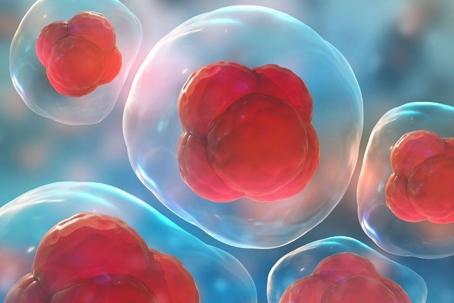Stem cell research is making strides to help eradicate many diseases. It is also being used to help injuries to heal completely within mere days, instead of months to years.
Although the practice itself is considered controversial, there are many benefits to using stem cells in treatment.
This therapy has been proven to help individuals living with diabetes, arthritis, Parkinson’s disease and burn victims. It can also help with spinal injuries and the aging process.
Although we are not fully aware of all of the possibilities of curing and treating illnesses with stem cells, the research thus far is promising.
Read on for more information on how stem cells could one day improve your life.
What Are Stem Cells?
To understand why stem cells are so powerful, knowing what they are in the first place is paramount. Because there is so much controversy surrounding them in the news, it can be difficult to discern fact from fiction.
Simply put, stem cells are “raw materials” of the body. They are the cells in which other cells with specific functions (such as turning into blood cells or heart cells) build from.
Researchers divide the stem cells into daughter cells. These new cells either become regenerating stem cells or become a specific cell. The latter are brain cells, spinal cord cells, blood cells, or any other specialized function within the body.
Why Are They So Controversial?
The use of stem cells can be controversial. They come from two sources: embryos and adults. Embryonic stem cells are versatile, especially in the first three to five days after creation because they can become any cell in the body. Right now, they are most often used to treat injuries and diseases of the eye.
Using embryonic stem cells raises many moral and ethical questions that some people are not prepared to face. Some believe that utilizing these embryos will be the gateway to creating humans inside a lab, rather than natural selection.
Adult stem cells are less controversial. Doctors take them from bone marrow or fat of an adult human being. It used to be thought that these cells could only stay in the form they were created in. Now, scientists have found that with genetic reprogramming, they can change the cells to other forms.
What Diseases Can They Help Cure?
Although the possibilities are limitless, we do already know that stem cells can help reduce or cure a variety of illnesses.
Thus far, they have been able to help heal injuries and illnesses that previous generations simply lived with or died from.
Stem cell therapy has restored the vision of many who have had eye injuries or illnesses that have contributed to the loss of vision.
They have also helped with spinal cord injuries, brain trauma, diabetes, Parkinson’s, multiple sclerosis (MS), Alzheimer’s, cardiovascular disease and in the healing of wounds.
What Are the Benefits of Stem Cells to Treat Injuries?
Stem cells treat orthopedic injuries by growing new tissue that has sustained damage. Scientists can regrow bones, muscles, cartilage, and tendons, which offers a new lease on life for those who have damaged these tissues.
These therapies can reduce the time people spend in rehab after serious injuries. This can be very valuable to those prone to such injuries, such as sports or dance professionals. For those whose livelihoods depend on using their limbs, regaining strength or repairing an injury is essential.
There is evidence to support that some of these treatments might be able to get injured individuals back to their normal routine after one week. This would eliminate things like failed surgeries and the need for long periods of recovery.
Can Stem Cells Treat Age-Related Diseases?
Diseases like Alzheimer’s and Parkinson’s mostly occur in older adults. There is evidence that stem cells could help those who suffer from these devastating diseases.
Research has concluded that scientists will one day be able to create brain cells, neurons, and synapses, all of which are often destroyed by degenerative diseases.
At the moment, we know that the potential exists to slow down degeneration in these illnesses. In some cases, stem cells might even help restore people to their former selves. This might be the case for those who have suffered a stroke or live with Alzheimer’s.
This will work by replacing some of the parts of the brain that experienced alteration during an injury, stroke or part of a degenerative condition.
What About Spinal Cord Injuries?
Spinal cord injuries can be devastating and can cause profound disability.
There is new evidence that people with spinal cord injuries could rehabilitate with some of the available stem cell therapies. In most cases, scientists have used embryonic stem cells to replace the damaged cells after a spinal cord injury.
Research shows that the most effective way to use the stem cells will be to inject them into the injured area, helping regenerate the damaged cells around the injury.
Those with profound disabilities may one day be able to walk again or function on a much more independent level.
Will Stem Cell Therapy Work For Me?
Although we know there are endless benefits of stem cells, the research itself is in its infancy. This means that we have not unleashed their full potential and the future of treatment is endless.
At the moment, stem cells are most commonly used to treat cancer patients who have had their cells damaged by chemotherapy.
Speak to your doctor about all of your options when it comes to recuperating from injuries. He or she may have insight into new treatments that have just become available.
For more information on treating and mitigating back pain, visit our blog for helpful articles, tips and tricks.

